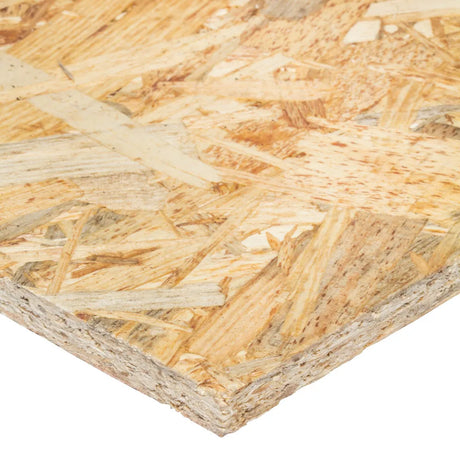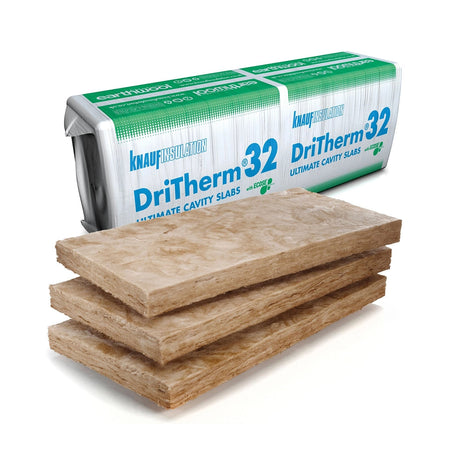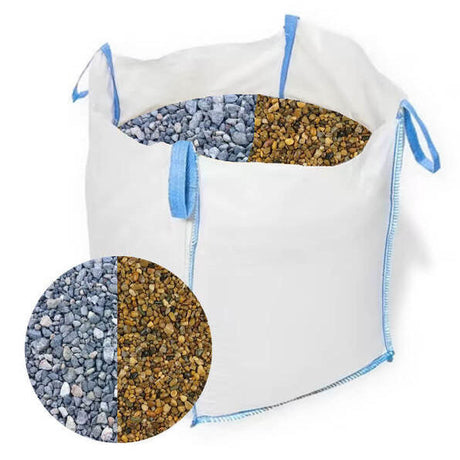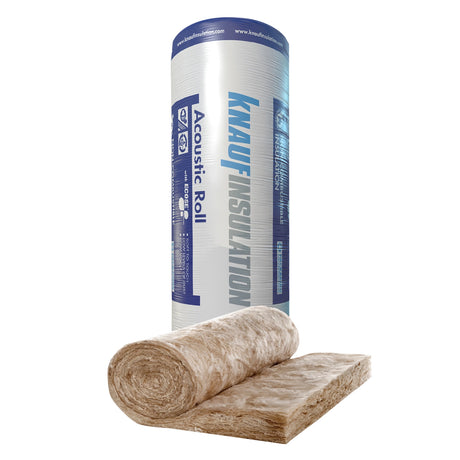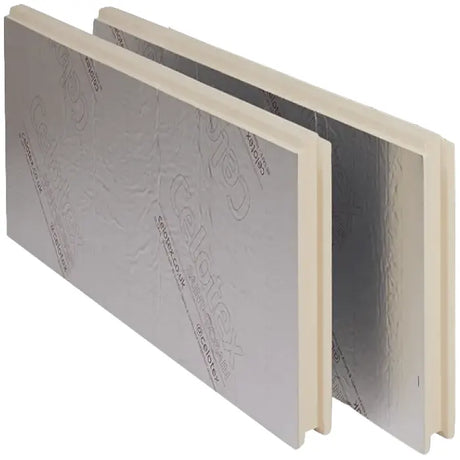Transform your property's thermal performance with expert PIR insulation installation techniques using premium brands like Celotex, Recticel, and Ecotherm
When it comes to achieving exceptional thermal performance in your building project, few materials deliver the combination of efficiency, versatility, and ease of installation that PIR (Polyisocyanurate) insulation boards provide. Whether you're embarking on a new build, tackling a renovation, or upgrading your property's energy efficiency, understanding how to properly install these high-performance boards can make the difference between good results and outstanding ones.
At DIY Building Supplies, we've guided countless DIY enthusiasts and trade professionals through successful PIR insulation installations across the UK. From our base in Nottingham, we've seen firsthand how proper installation techniques can transform a property's thermal performance whilst ensuring compliance with increasingly stringent building regulations. This comprehensive guide draws from our extensive experience working with leading manufacturers like Celotex, Recticel, and Ecotherm to provide you with the professional knowledge needed for exceptional results.
PIR insulation boards have revolutionised the way we approach thermal efficiency in British construction. These rigid foam boards offer remarkable insulation properties in surprisingly thin profiles, making them ideal for projects where space is at a premium. Their closed-cell structure provides excellent moisture resistance, whilst their dimensional stability ensures long-term performance even in the challenging conditions typical of UK weather patterns.
Understanding PIR Insulation: Why Professional Results Matter
The popularity of PIR insulation boards among British builders and DIY enthusiasts stems from their exceptional performance characteristics and practical benefits. Unlike traditional insulation materials, PIR boards deliver outstanding thermal efficiency through their sophisticated cellular structure, where tiny gas-filled cells create an effective barrier against heat transfer. This advanced design allows PIR boards to achieve impressively low U-values—often between 0.022 and 0.028 W/mK—meaning you can achieve superior insulation performance with thinner boards compared to alternative materials.
Leading UK manufacturers like Celotex have spent decades perfecting their PIR formulations to meet the specific demands of British construction. Their GA4000 range, for instance, provides excellent thermal performance whilst maintaining the structural integrity needed for both floor and roof applications. Similarly, Recticel's Eurowall and Eurothane ranges offer specialised solutions for different installation scenarios, from cavity walls to flat roofs, each engineered to deliver consistent performance throughout their operational life.
What sets PIR boards apart in the UK market is their remarkable versatility across different applications. Whether you're insulating a solid ground floor in a Victorian terrace, upgrading the thermal performance of a pitched roof in a 1960s semi-detached property, or creating a high-performance flat roof system for a contemporary extension, PIR boards can be adapted to meet your specific requirements. This adaptability, combined with their moisture resistance and dimensional stability, makes them particularly valuable in our climate where thermal bridging and condensation management are critical considerations.
The economic benefits of choosing PIR insulation extend well beyond the initial material costs. Properties insulated with properly installed PIR boards typically demonstrate significant reductions in heating costs, with many homeowners reporting energy bill savings of 20-30% compared to previously uninsulated structures. More importantly, these savings continue year after year, making PIR insulation one of the most cost-effective improvements you can make to any property.
Essential Tools and Materials: Setting Yourself Up for Success
Professional-quality results begin with having the right tools and materials at hand before you start your installation. The precision required for effective PIR board installation demands tools that can deliver clean, accurate cuts and secure, lasting fixings. A fine-toothed saw or sharp insulation knife forms the cornerstone of your toolkit—these tools ensure clean cuts that fit precisely together, eliminating gaps that could compromise thermal performance.
Quality measuring and marking tools prove equally crucial for successful installation. A reliable tape measure, sharp pencil, and straight edge allow you to mark cutting lines accurately, reducing waste whilst ensuring boards fit properly within your installation area. Professional installers often recommend using a sharp knife for scoring boards before breaking them along the score line, as this technique typically produces cleaner edges than sawing, particularly when working with thinner boards.
Your choice of PIR insulation boards deserves careful consideration based on your specific application requirements. Celotex boards, widely regarded as the gold standard in the UK market, offer different specifications for various applications—their GA4000 range provides excellent general-purpose performance, whilst their XR4000 range includes enhanced moisture resistance for demanding environments. Recticel's product range offers similar versatility, with their Eurothane GP boards providing reliable performance for general applications and their PowerDeck range specifically engineered for inverted roof systems.
The selection of appropriate fixings and sealing materials can significantly impact your installation's long-term performance. Foil tape or aluminium joint tape creates airtight seals between boards, preventing thermal bridging that could compromise your insulation's effectiveness. When fixing boards mechanically, choosing appropriate screws and fixings for your substrate ensures secure installation without damaging the boards' cellular structure. For applications requiring vapour control layers or breathable membranes, selecting compatible materials from reputable manufacturers ensures system compatibility and warranty compliance.
Personal protective equipment might seem like an afterthought, but working safely allows you to focus on achieving the best possible installation quality. Gloves protect your hands from sharp edges, whilst long sleeves prevent skin irritation that can occur when handling insulation materials. A dust mask, whilst not always strictly necessary with PIR boards, provides additional protection when cutting boards or working in dusty environments.
Mastering Floor Insulation: Professional Techniques for Solid and Suspended Floors
Floor insulation using PIR boards offers one of the most effective ways to improve your property's thermal performance, particularly in older buildings where floors often represent significant sources of heat loss. The key to successful floor insulation lies in understanding how heat moves through different floor constructions and adapting your installation technique accordingly. Whether you're working with a solid ground floor or suspended timber construction, the principles of creating continuous insulation coverage whilst managing moisture and thermal bridging remain consistent.
Preparing Your Floor Area: The Foundation of Success
Thorough preparation forms the foundation of any successful PIR floor insulation installation. For solid ground floors, this begins with ensuring your damp-proof membrane (DPM) is properly installed and functioning effectively. Any defects in the DPM can lead to moisture problems that compromise both your insulation's performance and the structural integrity of your floor system. Take time to inspect the entire floor area, looking for signs of dampness, uneven surfaces, or structural issues that need addressing before installation begins.
The cleaning and levelling process might seem mundane, but these steps directly impact your final results. Remove all debris, dust, and loose material from the floor surface, paying particular attention to areas around the perimeter where boards will meet walls. Any irregularities in the floor surface can create gaps beneath your insulation boards, reducing their effectiveness and potentially causing problems with your floor finish. Use a straight edge to identify high and low spots, addressing significant variations before proceeding with board installation.
For suspended timber floors, preparation involves a thorough assessment of the existing joist structure. Check that joists are sound, properly supported, and adequately spaced for your chosen board thickness. Any signs of rot, insect damage, or structural weakness need addressing before insulation installation begins. Understanding your joist spacing and condition helps determine whether you'll install boards between joists, over joists, or using a combination of both approaches for optimal thermal performance.
Measuring and Cutting: Precision for Performance
Accurate measuring and cutting separate professional-quality installations from amateur attempts that compromise thermal performance. Begin by carefully measuring your installation area, noting any irregularities, obstacles, or features that will require custom cutting. Create a simple sketch showing board layout, including how boards will be positioned to minimise waste whilst maintaining proper joint patterns. This planning stage helps identify potential challenges before you begin cutting, reducing errors and material waste.
When cutting PIR boards, technique matters as much as tool choice. Score boards using a sharp knife and straight edge, applying firm, consistent pressure to create a clean score line through the board's facing material and into the foam core. For thicker boards, you may need multiple passes to achieve a clean break. Support the board properly during cutting to prevent damage to the cellular structure, and always cut on a stable surface that won't dull your blade or damage the board's foil facing.
The expansion gaps you leave around the perimeter might seem insignificant, but they play a crucial role in long-term performance. PIR boards expand and contract with temperature changes, and leaving 5-10mm gaps around the perimeter prevents buckling or compression that could compromise thermal performance. These gaps will be covered by skirting boards or floor finishes, so they won't be visible in the completed installation, but they're essential for maintaining board integrity over time.
Installing Boards: Creating Continuous Thermal Protection
The actual board installation process requires attention to detail and systematic working methods to achieve professional results. Begin installation in one corner of the room, working methodically across the floor area to maintain consistent joint patterns and board alignment. Lay boards tightly together, but avoid forcing them into position as this can damage the board edges or compress the insulation material.
Creating a brick-bond pattern by staggering board joints provides both structural stability and improved thermal performance. This pattern ensures that thermal bridges are minimised whilst distributing loads more evenly across the insulation layer. Plan your layout to minimise the number of small pieces needed, particularly around the room perimeter where cutting and fitting can be more challenging.
Sealing all joints with foil tape represents one of the most critical steps in achieving optimal thermal performance. The tape creates an airtight seal that prevents thermal bridging and helps maintain the insulation system's effectiveness over time. Apply tape carefully, ensuring complete adhesion along the entire joint length. Press the tape down firmly to eliminate air bubbles or lifting edges that could compromise the seal's integrity.
The overlay installation completes your floor insulation system and requires careful consideration of your intended floor finish. Chipboard overlays provide a stable base for most floor finishes whilst distributing loads evenly across the insulation layer. Ensure your overlay boards are appropriate for your intended use—moisture-resistant grades for areas prone to spillages, and load-bearing grades for high-traffic areas. When installing underfloor heating, coordinate the heating system installation with your overlay to ensure optimal performance and accessibility for future maintenance.
Pitched Roof Insulation: Maximising Thermal Performance in Complex Geometries
Pitched roof insulation using PIR boards offers exceptional opportunities to improve your property's thermal performance, particularly when employing warm roof construction methods that eliminate thermal bridging through structural elements. The complexity of pitched roof geometries requires careful planning and systematic installation techniques to achieve optimal results whilst maintaining proper ventilation and weather protection.
Roof Preparation: Creating the Perfect Installation Environment
Successful pitched roof insulation begins with thorough assessment and preparation of the existing roof structure. Examine rafters carefully for signs of damage, sagging, or inadequate support that could affect your insulation installation. Any structural issues need addressing before insulation work begins, as PIR boards perform best when installed on stable, properly aligned substrates. Check rafter spacing and dimensions to ensure compatibility with your chosen board sizes and installation method.
The installation of breathable membranes forms a critical component of modern pitched roof systems, providing secondary weather protection whilst allowing vapour transmission that prevents condensation problems. When using above-deck insulation methods, ensure your breathable membrane is properly installed over rafters before beginning board installation. The membrane should be draped between rafters to create slight sags that allow any penetrating moisture to drain to the eaves rather than pooling against the insulation.
Roof access and safety considerations deserve particular attention when planning your installation. Ensure you have safe, stable access to all areas requiring insulation, and plan your material handling to minimise risks whilst maintaining installation quality. Weather conditions significantly impact both safety and installation quality, so plan your work for periods of stable, dry weather that allow proper sealing and fixing of all components.
Board Installation Techniques: Achieving Continuous Insulation Coverage
The choice between installing PIR boards between rafters, over rafters, or using a combination of both methods depends on your specific thermal performance requirements and existing roof construction. Installing boards between rafters provides good thermal performance whilst maintaining maximum headroom, but requires careful cutting and fitting to ensure complete coverage without compression. Over-rafter installation typically provides superior thermal performance by eliminating thermal bridging through structural elements, but reduces internal space and requires additional structural considerations.
When fitting boards between rafters, precision cutting becomes essential for achieving optimal performance. Measure each bay carefully, as rafter spacing often varies throughout the roof structure. Cut boards to fit snugly between rafters without forcing or compressing them, as compression reduces insulation effectiveness. Pay particular attention to areas around roof penetrations, valleys, and ridge details where custom cutting may be required to maintain continuous insulation coverage.
Over-rafter installation allows for continuous insulation layers that eliminate thermal bridging whilst simplifying the cutting and fitting process. Fix boards directly over rafters using appropriate mechanical fixings with plastic washers that distribute loads without damaging the board surface. The continuous nature of this installation method makes sealing joints with foil tape particularly important for maintaining airtightness and thermal performance.
Counter-batten installation completes your roof insulation system and provides the foundation for your final roof covering. Fix counter-battens through the insulation layer into rafters using fixings long enough to achieve secure purchase in the structural timber. The counter-battens create a ventilation space above the insulation whilst providing fixing points for tile battens or other roof covering support systems. This ventilation space proves crucial for managing moisture and maintaining long-term roof health.
Professional Installation Tips: Achieving Consistently Excellent Results
The difference between adequate and exceptional PIR insulation installation often lies in attention to seemingly minor details that have significant cumulative effects on performance. Professional installers develop systematic approaches that ensure consistent quality across every aspect of the installation, from initial planning through final sealing and finishing.
Maintaining board thickness throughout the installation represents one of the most critical factors in achieving designed thermal performance. PIR boards derive their insulation properties from the gas-filled cells within their structure, and any compression reduces the volume of these cells, directly impacting thermal efficiency. Handle boards carefully during installation, using appropriate lifting techniques that avoid point loads or edge damage that could compromise performance.
The importance of proper joint sealing cannot be overstated in achieving optimal thermal performance. Every unsealed joint represents a potential thermal bridge that allows heat transfer through your insulation layer. Develop a systematic approach to joint sealing, ensuring complete coverage along all board edges. Quality foil tape provides the most reliable sealing method, but proper application technique ensures maximum adhesion and longevity. Clean board surfaces before tape application, apply consistent pressure during installation, and inspect sealed joints to ensure complete adhesion.
Moisture resistance varies among different PIR board specifications, and understanding these variations helps ensure appropriate material selection for your specific application. While PIR boards generally offer excellent moisture resistance, prolonged exposure to high humidity or direct moisture contact can affect performance in some applications. In particularly demanding environments, consider boards with enhanced moisture resistance or additional protective measures that ensure long-term performance reliability.
UV protection becomes important when boards will be exposed to sunlight during installation or if completion of weather protection will be delayed. Most PIR boards include UV-inhibiting compounds in their facings, but extended exposure can still cause surface degradation that affects both appearance and performance. Plan your installation sequence to minimise UV exposure time, and consider temporary protection measures for installations that cannot be immediately weather-protected.
Avoiding Common Installation Mistakes: Learning from Experience
Understanding and avoiding common installation mistakes can save significant time, money, and frustration whilst ensuring optimal thermal performance from your PIR insulation investment. These mistakes often result from rushing the installation process or underestimating the importance of proper preparation and attention to detail.
Thermal bridging through gaps between boards represents perhaps the most common and costly mistake in PIR insulation installation. Even small gaps can significantly reduce thermal performance, as heat readily travels through these paths of least resistance. Take time to ensure boards fit tightly together, and address any unavoidable gaps with appropriate sealants or tape. Remember that thermal bridging effects are cumulative—multiple small gaps can have dramatic impacts on overall system performance.
Poor cutting around obstacles, pipes, and structural features often creates significant thermal bridges that compromise system performance. These areas require particular attention and often benefit from custom solutions rather than attempting to make standard boards fit poorly suited applications. Consider using expanding foam sealants for small gaps around pipes, or cutting custom pieces that provide proper coverage whilst maintaining structural integrity.
Failing to stagger board joints weakens the installation structurally whilst creating linear thermal bridges that reduce performance. Plan your board layout to achieve proper staggering, even if this requires some additional cutting or results in slightly higher material usage. The improved performance and structural integrity more than justify the additional effort required for proper joint patterns.
Inadequate fixing represents another common mistake that can lead to board movement, joint failure, and long-term performance degradation. Use appropriate fixings for your substrate and installation method, ensuring adequate penetration into structural elements whilst avoiding over-fixing that could damage boards. Follow manufacturer recommendations for fixing patterns and frequencies, adapting these guidelines to your specific installation conditions and requirements.
The Science Behind Superior Thermal Performance
Understanding how PIR insulation achieves its exceptional thermal performance helps inform better installation decisions and highlights why proper installation techniques matter so much for achieving designed performance levels. PIR boards derive their insulation properties from millions of tiny closed cells filled with low-conductivity gases that resist heat transfer through conduction, convection, and radiation.
The cellular structure of PIR insulation creates its primary thermal resistance through the trapped gases within each cell. These gases have much lower thermal conductivity than air, creating an effective barrier against heat transfer. However, this cellular structure can be damaged by compression, point loads, or improper handling that ruptures cell walls and allows gas escape. Maintaining the integrity of this cellular structure throughout handling, cutting, and installation ensures optimal thermal performance throughout the insulation's service life.
The foil facings found on most PIR boards provide additional thermal benefits by reflecting radiant heat transfer whilst protecting the foam core from moisture and UV exposure. These facings also provide structural benefits, helping boards maintain their shape and dimensional stability during installation and throughout their operational life. Damage to facings during installation can compromise both thermal and moisture performance, highlighting the importance of careful handling and proper cutting techniques.
Edge sealing becomes particularly important in PIR installations because the board edges represent the primary path for air movement through the insulation layer. Properly sealed joints eliminate convective heat transfer that would otherwise bypass the insulation's thermal resistance. The quality of edge sealing often determines whether an installation achieves its designed thermal performance or falls short due to thermal bridging and air movement.
Long-term Performance and Maintenance Considerations
PIR insulation boards offer exceptional longevity when properly installed and maintained, but understanding factors that affect long-term performance helps ensure your investment continues delivering optimal results throughout its operational life. The stability of PIR boards' cellular structure means they typically maintain their thermal properties for decades, but environmental factors and installation quality significantly influence this performance retention.
Moisture management represents perhaps the most critical factor in ensuring long-term PIR insulation performance. While PIR boards themselves offer excellent moisture resistance, inadequate vapour control or weather protection can allow moisture accumulation that affects both thermal performance and structural integrity. Regular inspection of weather barriers, vapour control layers, and drainage systems helps identify potential problems before they compromise insulation performance.
The dimensional stability of PIR boards ensures they maintain their installed dimensions throughout normal temperature variations, but extreme conditions or improper installation can lead to board movement that opens joints and reduces thermal performance. Quality installation with proper edge sealing and appropriate fixing minimises these risks whilst ensuring boards remain properly positioned throughout their service life.
Understanding manufacturer warranty requirements helps protect your investment whilst ensuring optimal long-term performance. Most reputable manufacturers offer substantial warranties on their PIR products, but these warranties typically require adherence to specific installation guidelines and maintenance requirements. Familiarising yourself with these requirements before installation ensures warranty compliance whilst highlighting important factors for long-term performance success.
Choosing the Right PIR Boards: Navigating Specifications and Performance Claims
The UK market offers numerous PIR insulation options from established manufacturers like Celotex, Recticel, and Ecotherm, each with specific performance characteristics and application strengths. Understanding how to evaluate and compare these options ensures you select products that deliver optimal performance for your specific requirements whilst providing good value for your investment.
Thermal conductivity values provide the primary basis for comparing PIR boards, but understanding how these values relate to real-world performance requires consideration of installation factors and long-term stability. Lambda values between 0.022 and 0.028 W/mK represent typical ranges for quality PIR boards, with lower values indicating better insulation performance. However, achieving these performance levels in practice requires proper installation techniques that maintain board integrity and eliminate thermal bridging.
Compressive strength specifications indicate a board's ability to withstand loads without deformation that could compromise thermal performance. Higher compressive strength becomes particularly important in floor applications where boards must support structural loads, whilst roof applications typically require less structural performance but benefit from dimensional stability under varying temperature conditions.
Fire performance ratings have become increasingly important in UK construction, with building regulations requiring specific performance levels for different applications. Understand the fire rating requirements for your intended application, and ensure your chosen boards meet or exceed these requirements. Reputable manufacturers provide comprehensive fire performance data that includes both reaction to fire and fire resistance characteristics.
Environmental performance considerations increasingly influence product selection, with many manufacturers now providing environmental product declarations (EPDs) that detail their products' environmental impacts throughout their lifecycle. These considerations extend beyond thermal performance to include manufacturing energy consumption, recycled content, and end-of-life disposal options.
Professional Results: Your Next Steps Towards Superior Insulation
Achieving professional-quality PIR insulation installation requires combining quality materials with proper techniques and attention to detail throughout the installation process. The investment in time and effort required for proper installation pays dividends through improved thermal performance, reduced energy costs, and enhanced comfort throughout your property's operational life.
Planning remains the foundation of successful PIR insulation installation, whether you're tackling a small domestic project or a larger commercial application. Take time to understand your specific requirements, evaluate different product options, and develop a detailed installation plan that addresses potential challenges before they occur. This planning phase helps ensure you have appropriate materials, tools, and knowledge needed for successful completion.
Quality control throughout the installation process ensures consistent results that meet your performance expectations. Develop systematic approaches to measuring, cutting, and installing boards that maintain consistent quality across your entire project. Regular inspection of completed work helps identify and address any issues before they compromise overall system performance.
At DIY Building Supplies, we're committed to supporting your success through every stage of your PIR insulation project. Our technical team combines extensive product knowledge with practical installation experience to provide guidance tailored to your specific requirements. From initial product selection through installation support and troubleshooting, we're here to ensure your project achieves the exceptional results you're seeking.
Ready to Transform Your Property's Thermal Performance?
Discover our comprehensive range of premium PIR insulation boards from trusted UK manufacturers including Celotex, Recticel, and Ecotherm. Whether you're planning floor insulation, roof upgrades, or comprehensive thermal improvements, our expert team is ready to help you achieve professional results.
Shop High-Performance PIR Insulation Boards Today – Explore our complete collection and benefit from competitive pricing, expert technical support, and reliable delivery across mainland UK at DIYBuildingSupplies.co.uk.
Questions about your specific project requirements? Contact our technical team for personalised guidance and professional recommendations tailored to your unique installation challenges.



